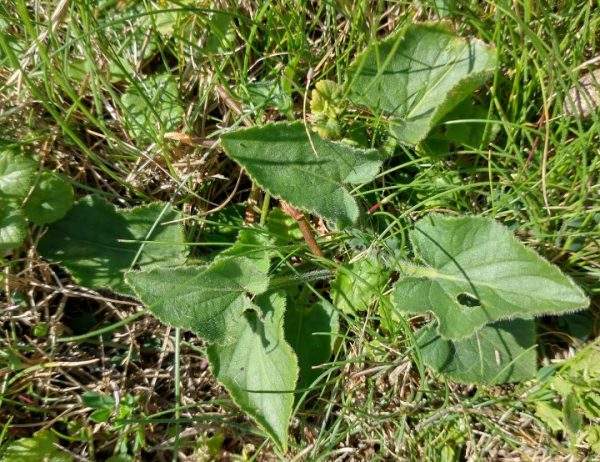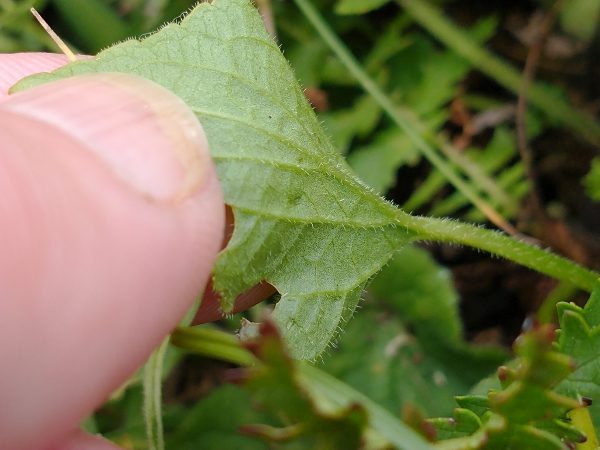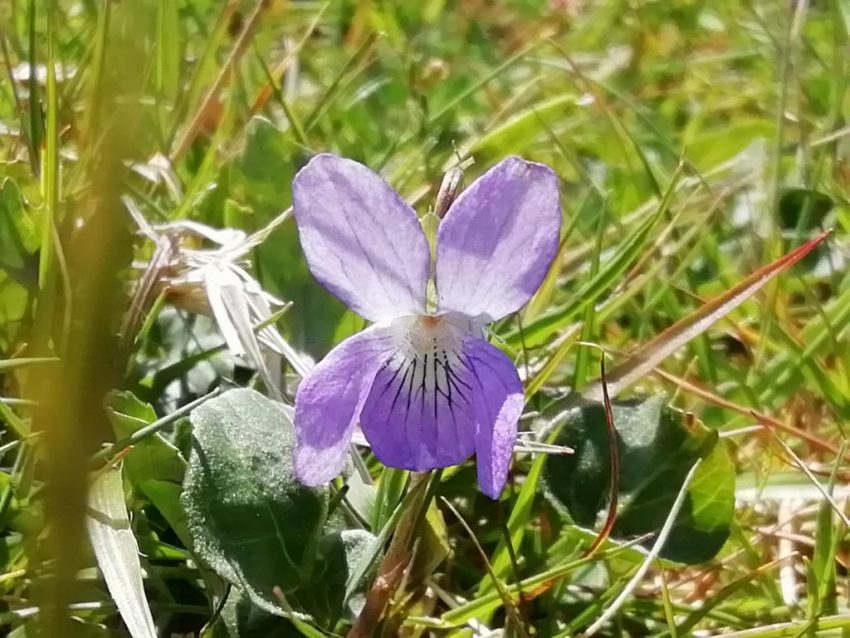Differentiating between violets
The family of violas can be hard to tell apart, but I found a great ID guide published on Twitter.
I’ve had quite a lot of trouble sorting them out but seeing them in the flesh really helps.
The violas I have spotted have been growing in open ground such as short verges.

Sweet violet – Viola odorata

Identified by rich purple (or white) flower colour with rounded sepal appendages, perfume, and course round leaves.

Common dog violet – Viola riviniana
I noticed this has more delicate and pointed foliage, paler, bluer flower, large pointed sepal appendages, dark veining on bottom petal, and a paler spur.

Hairy violet – Viola hirta
I was shown Hairy violet leaves when taking part in chalk grassland surveys as they are an indicator species. The leaves in July were more substantial and more pointed than Sweet violet, slightly larger and very hairy.



In April 2022 I went to Seaford Head, now confident in ID, to find some plants in flower. There had been strong winds on this exposed site, as you can see from the slight damage to the bloom.


In April the leaves were generally smaller and less leathery than the ones I’d been looking at in the summer.

There are of course other violas that I haven’t yet spotted or confidently identified!
I have tagged blog posts mentioning Violas or violets with Violet or Viola
http://photographingwildflowers.co.uk/tag/violet/
http://photographingwildflowers.co.uk/tag/viola/

